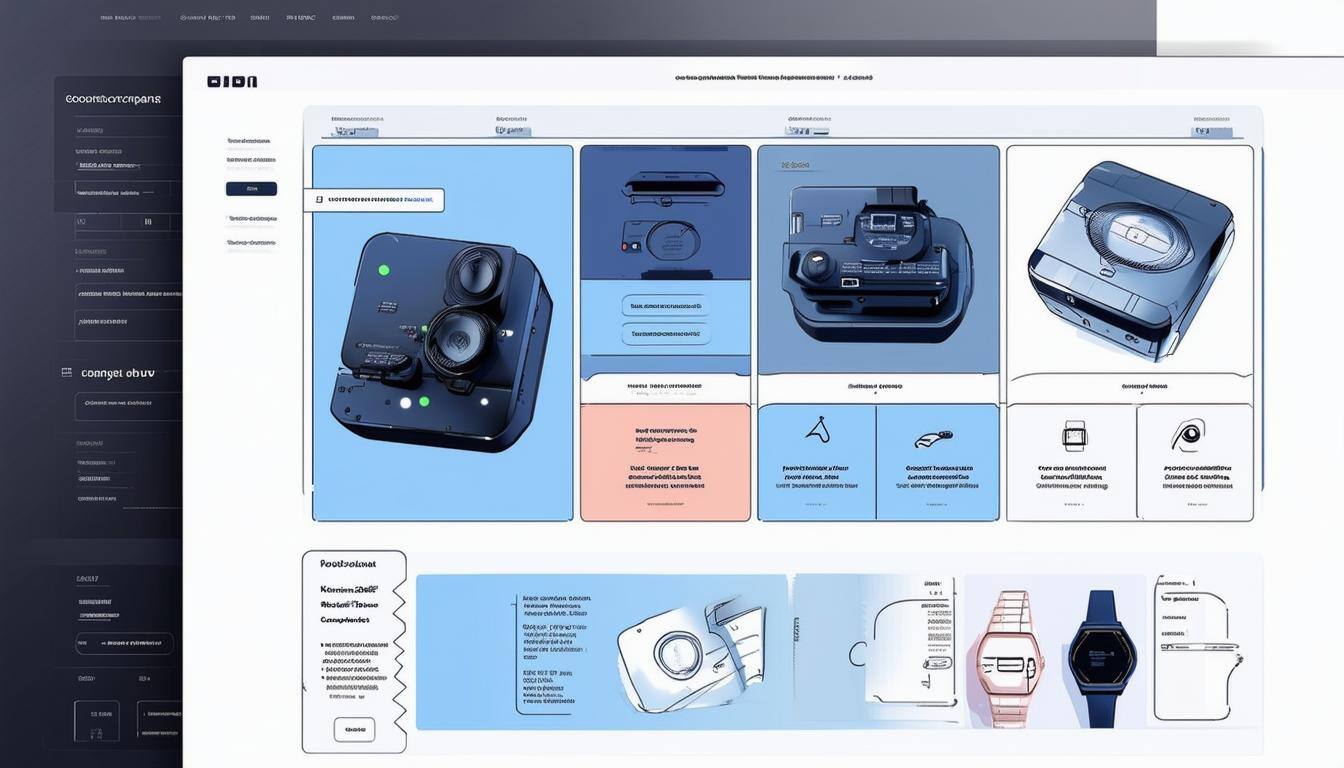
4 AI Prompts to Level Up Your Product Display Page Content
Product information arrives from hundreds of suppliers in PDFs, spreadsheets, and inconsistent formats. Before a single product display page (PDP) can go live, teams spend hours normalizing attributes, verifying specs, and retyping brand names.
Meanwhile, buyers arrive on your PDPs looking for one thing: confidence. They need to know is this the right part, will it fit, and can I trust it? When those questions aren’t answered quickly and clearly, buyers hesitate, bounce, or request quotes instead of ordering.
Generative AI has made it possible to produce high-quality product content instantly. But the results depend on context — the model must understand what kind of product it’s describing, what attributes matter, and how technical buyers read and decide. With the right prompt and clear product data (even a spreadsheet or a spec sheet PDF), you can create accurate, professional copy that builds trust and improves conversions.
This paper introduces four AI prompts that will help you improve your PDPs today:
- Product Titles that clearly communicate identity and key specifications.
- Product Descriptions that build buyer confidence and reduce friction.
- Key Attributes that enable fast comparison and compatibility decisions.
- Educational Content that boosts SEO and on-page engagement.
Each section explains why it matters, what to include, and provides an example AI prompt you can use directly in ChatGPT or another model.
Product Titles
A strong product title is the fastest path to buyer confidence. Technical customers — scientists, engineers, and procurement teams — scan PDPs to confirm, not discover. They’re looking for precise identifiers: material, range, size, configuration, and standard.
What makes an effective title
- Functionally complete: Names the exact product type.
- Attribute-rich and structured: Includes the key discriminators that distinguish variants.
- Concise but specific: 6–10 words, no filler adjectives.
- Brand-led: The brand or manufacturer name builds trust and signals quality.
- Readable in isolation: Understandable even without an image or spec sheet.
- Terminologically precise: Uses the exact terms found in datasheets or part labels.
- Formatting consistent: Title case, commas for separation, no decorative punctuation.
Prompt
You are writing a technical e-commerce product title for a product display page aimed at scientists, engineers, and other expert buyers.
These buyers already know what they’re looking for — they scan to confirm, not discover. Your goal is to produce a precise, structured title that communicates the product’s identity and key specifications at a glance.
Guidelines:
Begin with the brand or manufacturer name.Follow with the product type (its functional category).Include 2–4 key technical discriminators such as material, size/capacity, range, configuration, sterility, compliance, or standard.Use the exact terminology found in spec sheets or datasheets; avoid marketing synonyms.Do not include part numbers, SKUs, or catalog codes.Do not use em dashes or special symbols.Write in Title Case, separating attributes with commas.Keep under 110 characters and 6–10 words total.Prioritize clarity, precision, and consistency — not creativity.
Format:
[Brand Name] [Product Type], [Key Attribute 1], [Key Attribute 2], [Key Attribute 3]
Example outputs:
United Scientific Centrifuge Tube Rack, 50 mL, Polypropylene, BlueGuardian Equipment Eye/Face Wash Station, Wall Mounted, Stainless SteelIsolab Laborgeräte Drying Tube, Bent, 150 mmEdwards Vacuum Cross Piece, Aluminum, High VacuumMettler Toledo Analytical Balance, 220 g, 0.1 mg, Internal Calibration
Example Outputs
|
|
DEWALT 16ga Cordless Finish Nailer, 20V MAX, Brushless, Micro Nose |
|
|
Sigma-Aldrich Sulfuric Acid, ACS Reagent, 95.0-98.0%, Liquid |
|
|
Centrotherm Vent Elbow, Polypropylene, 2 in, 45 Degree, Long Socket |
Product Descriptions
Technical buyers aren’t looking for lifestyle copy. They want clarity, proof of reliability, and reassurance of fit. The product description sits near the top of your PDP and is critical for building confidence.
What to include
- What it is — State the product type and primary function.
- Why it’s reliable — Reference materials, standards, or certifications.
- What it’s used for — Define the application or compatible systems.
- What it pairs with — Mention accessory compatibility
- Why it’s better — Optional differentiator (durability, precision, safety).
Prompt
You are writing the short overview paragraph for a technical product display page. Your audience is a technical or professional buyer (engineer, scientist, technician, or procurement specialist) who already knows what they’re looking for and is scanning to confirm details before purchasing. Write 1 short paragraph (40–80 words) in a clear, precise, professional tone. Avoid marketing language (“premium,” “innovative,” “cutting-edge”). Focus on clarity, reliability, and use case confirmation.
Content to include
What it is and what it does — define the item and its primary function.Quality or compliance signals — include materials, tolerances, or standards.Typical use cases — describe where or how it’s used.Compatibility — mention fitting, system, or series compatibility if relevant.Optional differentiator — note 1 clear performance or durability benefit.
Style & Formatting
Write in complete sentences (not fragments or bullet points).Use plain, technical English — concise and confident.Do not repeat the full title or manufacturer name unless needed for clarity.Do not include part numbers or prices.No superlatives (“best,” “ultimate,” etc.)No filler adjectives.Avoid generic phrases like “high quality,” “ideal solution,” etc.If data is missing, gracefully omit that element — do not hallucinate.
Example Outputs
A battery-powered 16-gauge straight finish nailer for fastening trim, baseboard, molding, and window casing. The brushless motor provides increased runtime and durability while the micro nose improves line-of-sight for precise nail placement. Includes tool-free depth adjustment, jam release, LED workspace lights, and a stall release; compatible with all DEWALT 20V MAX batteries.
Concentrated sulfuric acid (95.0-98.0%, ACS reagent) is a strong mineral acid supplied as a liquid reagent for analytical and synthetic laboratory applications. It functions as an acidifying and dehydrating agent and is used for acid digestion, pH adjustment, and reagent preparation. The product meets ACS purity specifications and carries GHS corrosive classifications; handle with appropriate PPE and corrosion-resistant containers.
Single-wall 45° elbow for vent systems, molded from PPs (polypropylene) with an integrated EPDM gasket to provide an airtight joint. Evaluated to UL 1738 and ULC S636, it installs without glues, primers, or solvents and features a long socket for secure engagement. Used to change direction or create offsets in InnoFlue single-wall vent runs; suitable for outdoor use.
Key Attributes
Attributes are where buying decisions happen. They allow technical customers to confirm compatibility, compare alternatives, and ensure compliance.
Best practices
- Prioritize decision-critical details: performance limits, dimensions, material, standards, compatibility.
- Organize logically: General → Specifications → Performance → Compliance → Packaging.
- Normalize units: mm, °C, L/min, psi, V, etc.
- Use exact labels: “Outer Diameter (mm)” not “Size.”
- Avoid redundancy and filler.
- Ensure consistency for both human and machine readability.
Prompt
You are enriching technical product data for a B2B e-commerce PDP. Infer the product type, select the most decision-critical attributes (fit, compatibility, performance, standards, packaging), normalize units, and output as an unordered HTML list.
Instructions:
Infer product typeChoose relevant attributes that help a technical buyer confirm compatibility, performance, or compliance.Normalize units (e.g., mm, °C, L/min, psi, V, A). Keep labels consistent and specific (e.g., “Outer Diameter (mm)”).Organize attributes into clear sections. Use only the sections that make sense for this product.Do not invent values.Omit attributes that aren’t present.Avoid marketing fluff and duplication.
Constraints:
Output HTML only (no explanations).Omit empty sections/rows.No marketing language; only decision-relevant specs.Prefer exact values over ranges unless only ranges are provided.Do not include brands, manufacturers, distributors, SKU, or part number.Do not include information about pricing, stock levels, or lead times.
Example Output
- Product Type: Straight finish nailer
- Nail Gauge: 16 Gauge
- Nail Length (in): 1-1/4 to 2-1/2
- Battery Voltage (V): 20V MAX (nominal 18V)
- Motor Type: Brushless
- Magazine Capacity (nails): 110
- Drive Type: Cordless (battery)
- Nose Type: Micro nose
- Trigger Modes: Sequential and contact actuation
- Features: Tool-free depth adjustment, tool-free jam release, multi-functional LED lights, integrated stall release lever, adjustable belt hook
- Compatibility: Compatible with DEWALT 20V MAX batteries
Educational & Value Content
Educational or value content keeps buyers engaged longer, drives SEO, and builds authority. It transforms a PDP from a transaction page into a trusted resource.
What to include
- Product-specific FAQs: Address common compatibility or performance questions.
- How-to guides / best practices: Show how to choose, install, or maintain.
- Safety & handling info: PPE, storage, disposal, and compliance references.
- Maintenance tips: Cleaning, calibration, or replacement intervals.
- Application notes / case studies: Demonstrate outcomes or real-world use.
- Visual aids: Diagrams, labeled parts, or markdown tables for clarity.
Prompt
You are generating educational and value-add content for a technical product detail page. Write an FAQ and educational content section that:
Improves SEO through relevant long-tail keywords and natural phrasingBuilds buyer confidence by explaining why and how the product is usedIncludes accurate technical and safety contextUses a professional, helpful tone suitable for scientific or industrial usersFormat the response in HTML with clear headings and paragraph tags.Include domain-specific vocabulary relevant to this type of product.If possible, cite applicable standards or best practices (e.g., ASTM, ISO, OSHA).Avoid filler text.Do not include information specific to buying or procuring the product.Do not include any information related to returns, pricing, shipping, or lead times.You may cite manufacturer-provided product information, but do not cite other sellers or third parties.
Example Output
What is this tool designed to do?
This is a battery-powered 16-gauge straight finish nailer for driving finish nails into trim, baseboard, molding, window and door casing, and other finish carpentry substrates. It eliminates the need for an air compressor or gas cartridges while providing precise, countersunk fastener placement for visible finish work.
What fasteners does it accept?
Accepts 16 Gauge straight finish nails with lengths from 1-1/4 in to 2-1/2 in, collated in a magazine (110-nail capacity). Use manufacturer-recommended, properly collated nails to ensure correct feed and avoid jams.
Which actuation modes are available and when should I use them?
The tool provides selectable trigger modes: sequential (single-shot) and contact (bump) actuation. Use sequential mode for maximum control and reduced risk of inadvertent discharge when performing detail work; use contact mode for rapid repetitive fastening when installing long runs of trim where speed is prioritized and worksite clearances and safety controls are in place.
How do I clear jams and perform routine maintenance?
Follow the manufacturer's instructions for tool-free jam release and stall release lever operation to reset the driver blade and clear obstructions. Regular maintenance includes keeping the nosepiece and driver channel free of debris, inspecting the driver blade and magazine for wear, and using only recommended fasteners. Disconnect the battery before any maintenance or inspection.
What safety equipment and practices are recommended?
Wear eye protection and hearing protection when operating the tool. Observe standard nail gun safety practices: maintain a stable stance, keep hands clear of the nosepiece, and verify workpiece support before firing. Follow OSHA and ANSI safety guidance for fastening tools and site-specific PPE requirements.
What batteries and chargers are compatible?
Compatible with DEWALT 20V MAX battery packs; nominal voltage is 18V and maximum initial voltage is 20V. Use DEWALT-approved chargers and battery packs and follow battery manufacturer instructions for charging, storage, and temperature limits to maximize runtime and longevity.
Common troubleshooting tips
If the tool fails to drive nails or stalls, check the battery state of charge and seat; inspect for jammed or damaged fasteners; use the stall release lever if the driver blade is stuck. For feeding issues, confirm correct nail collation and that the magazine is properly loaded. If persistent faults occur, contact authorized service.
Conclusion: From Individual Prompts to Scalable Systems
If you’ve tested the prompts in this post, you’ve seen how effectively AI can generate clear, reliable product content. With the right context — even just a datasheet or structured spreadsheet — AI can produce PDP copy that improves buyer confidence and drives conversions.
But scaling that process across thousands of SKUs, multiple suppliers, and variable data quality is another challenge entirely. You need consistency, validation, and automation.
That’s where Kaavio comes in. Kaavio ingests unstructured data — PDFs, spec sheets, websites, and more — and automatically builds the product context that makes these prompts work reliably at scale. Then it applies structured prompting workflows to generate, validate, and organize content ready for publication across your e-commerce site.
The result: faster product onboarding, stronger SEO, and consistent, technically accurate content across your catalog.
Learn more at kaavio.ai



